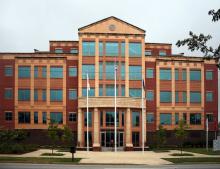Retail Muni Fiber Networks Charge Less - Community Broadband Bits Podcast 289

Do municipal fiber networks offer lower prices than the their competitors? Yes, almost always, according to a study from Harvard's Berkman Klein Center called Community-Owned Fiber Networks: Value Leaders in America.
David Talbot, a Fellow at Harvard's Berkman Klein Center for Internet and Society, joins us for episode 289 of the Community Broadband Bits podcast to discuss the study, conclusions, and challenges. He was last on episode 162 to talk about a report they did on muni fiber in Massachusetts.
We talk about the challenges of doing an analysis like this, the range of results, and how pricing from munis tends to not only be lower but also more transparent.
This show is 19 minutes long and can be played on this page or via Apple Podcasts or the tool of your choice using this feed.
Transcript below.
We want your feedback and suggestions for the show-please e-mail us or leave a comment below.
Listen to other episodes here or view all episodes in our index. See other podcasts from the Institute for Local Self-Reliance here.
Thanks to Arne Huseby for the music. The song is Warm Duck Shuffle and is licensed under a Creative Commons Attribution (3.0) license.


